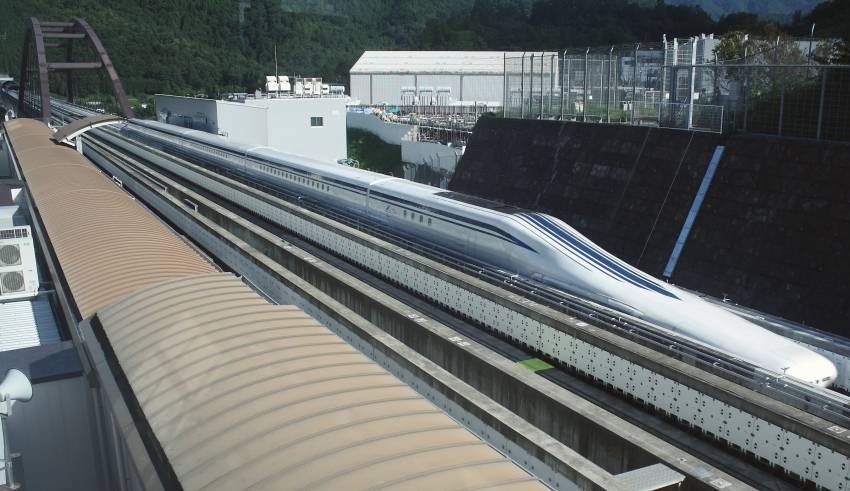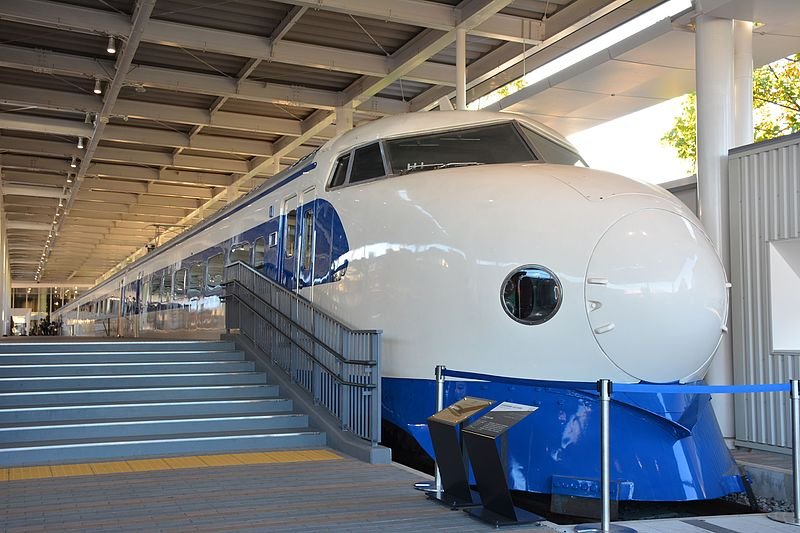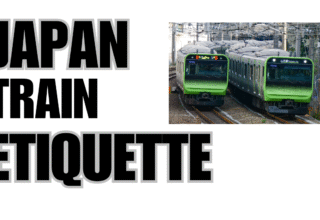
An in-depth look at the history of the Shinkansen “bullet train” and the future of high-speed rail travel in Japan.
Speed has always fascinated mankind. From early days when horses were used as a mode of transportation, to recent times, the race to be the fastest has always enthralled people. This need for speed is not just confined to individuals either. Countries all over the world have been trying to introduce fast public transportation to decrease the time it takes for people to travel. However, Japan is at forefront of this race to develop the fastest land trasnport system in the world.
From Steam to Electricity
High-speed trains have come a long way since their inception in the early 1800s. The Rocket steam locomotive, which was designed by Robert Stephenson in 1829, reached a speed of about 50 kmph (~31 mph) in 1830 and is known to have started the trend of designing faster locomotives.
The introduction of electricity helped take things to a whole new level. In 1903, an electric rail car developed by the German company Siemens & Halske reached an impressive speed of over 200 kmph (~124 mph). However, this was an experimental train operating on a test track. It would not be until Japan introduced the world’s first high-speed rail system in 1964 that the average person would have the opportunity to ride in a train traveling at such high speeds.
Japan’s Quest to Be the Fastest

The Japanese seem to be really fascinated with fast traveling vessels as they have been producing the fastest trains since 1964 when they introduced the Shinkansen trains that were able to reach speeds of 210 kmph (~130 mph). This started a speed race with Germany launching the TR04 Maglev (magnetic levitation) train that touched 250 kmph (~155 mph) and then following it with the Komet maglev that attained speeds of 400 kmph (~249 mph) in 1975.
Despite the bar having been set so high, Japan Railways (JR) was quick to regain its throne as the fastest train service provider when it introduced the ML-500R maglev which succeeded in attaining the speed of 500 kmph (~311mph) in 1979. This did not stop Japan Railways from trying to produce faster train engines and finally in 2015, they tested the L0 series maglev train which hit the speed of 603 kmph (~375 mph) to become the fastest train in the world. The train spent 10.8 seconds traveling at 603 kmph, during which it covered 1.8 kilometers (1.1 miles). That’s nearly 20 football fields in the time it took you to read the last two sentences!
A Brief Overview of the Original Shinkansen
Beyond setting speed records Japan’s Shinkansen, (a.k.a. bullet train) system has set the standard for fast and safe land transportation worldwide. The Shinkansen are not only known for their fast speeds, but also for their safety as they’ve never had a single accident resulting in passenger injuries or fatalities in their 50+ years of operation and serving more than 10 billion passengers.
The Shinkansen (literally meaning “new trunk/main line”) required a separate track to be built to accommodate the 25% wider standard gauge designed for 250 kmph+ (155 mph) speeds. The first Shinkansen line, known as the Tōkaidō line, was opened just in time for the first Tokyo Olympic Games on October 1, 1964. The line connected Tokyo to Osaka and served as an important symbol of just how far Japan had come since the end of World War II.
The introduction of the Shinkansen suddenly made high-speed rail travel available to the masses and it seems that people immediately embraced this revolution in transportation. Within the first three years, the Shinkansen had served more than 100 million passengers and by 1976, one billion passengers had utilized this service. Owing to its popularity at home and worldwide, the Shinkansen became a symbol for the progressive Japanese economy. The Shinkansen did not only set standards of speed for train services, but also played a monumental role in the improvement of the design of rail systems and tracks.
The video below shows a Japanese report about the October 1, 1964 opening of the Tōkaidō Shinkansen line. It features footage of the first Shinkansen train as it makes its way from Tokyo Station to Shin Osaka Station.
Enter the L0 Maglev
Not content resting on its laurels, Japan Railways (JR) has been hard at work building on the lessons learned from their many decades operating the Shinkansen in order to push its high-speed rail system to even more incredible speed. At the center of this effort is the L0 series maglev train, which has been documented as having a top speed of 605 kmph (~376 mph) and an average speed of 503 kmph (~313mph).
Popularly referred to in Japanese as a “linear motor car” (リニアモーターカー), JR’s new maglev train will operate along the still under construction Chūō Shinkansen (中央新幹線) line when it goes into service in the latter half of the 2020s. The Chūō Shinkansen will take only 67 minutes to reach Osaka from Tokyo. To understand how fast this is, currently the fastest Shinkansen takes 190 minutes to travel the same distance.
Cut the Wheels, Cut the Friction
The L0 maglev is without a doubt an engineering marvel. With their experience of designing the Shinkansen trains and tracks, the JR research division knew they had to contend with the friction caused between the track and the wheels of the train. The only solution was to somehow remove this friction, which meant that the wheels and the track needed to be separated. To achieve this, the L0 maglev uses magnetic levitation to move the vehicle without making contact with the ground. This means that the L0 maglev initially runs on wheels to accumulate speed and then retracts its wheels to travel along a guideway using magnets to create both lift and propulsion. This results in a train that levitates four inches (~10 cm) over the track to reduce friction and allow very high speeds.
Test, Test, Test
The first test run of these superconducting maglev trains was conducted by JR Central in late 2014. The test saw 100 people taking the train for a 27 mile (~43 km) ride. The fist train was able to achieve the speed of 500 kmph (~311 mph). After the trial run, JR Central continued a series of test runs and with every test run they were able to achieve faster speeds. Finally, it was in 2015 that the JR maglev train set the world speed record of 603 kmph (~374mph) in a test near Mount Fuji. These test runs became so famous in Japan that JR had to initiate a lottery system to select applicants for these trial runs.
Impressive Tech
Chūō Shinkansen trains use superconductivity to levitate and propel themselves. They use superconducting magnets that create repulsive and attractive forces between ground coils built into guideway panels on either side of the railroad track. The ground coils are also used as a brake for these trains. The electromagnetic force from the coils attracts the superconducting magnets through a change in the way the 3-phase AC electricity flows, which results in a powerful braking system without relying on friction.
Fast Train, Slow Progress
The Chūō Shinkansen is a mega project and as with any mega project, it has been faced with quite a few literal and figurative obstacles. The project requires a mammoth ¥9 trillion (~$83 billion) which would be used to build the infrastructure connecting Tokyo to Osaka. The project design requires that most of the track (an estimated 86%) be built underground to minimize the impact of earthquake tremors. The line was initially slated for a 2027 start, however this might not be possible with the current progress of the project.
The initial 286 km (~165 m) track between Tokyo and Nagoya is currently under construction. However, there is 9 km (~5.6 m.) stretch which runs through Shizuoka Prefecture that has run into some trouble. According to reports in late 2019, the issues began when the Governor of Shizuoka opposed the construction of the maglev track due to concerns that the drilling would affect the amount of groundwater for the 620,000 residents living along the Oi river. This opposition has already put the project behind schedule and it seems highly unlikely that the project would be completed by the initial deadline of 2027.
At the center of the trouble in Shizuoka is the prefecture’s governor: Heita Kawakatsu. On first glance, Kawakatsu’s opposition to the planned course of the maglev train seems perfectly justified since JR Central’s 2013 report on the project estimated that the Oi River’s water flow would decrease by 2 tons per second due to the project. In theory, this could result in depriving the local residents from the amount of water necessary for their daily lives. However, Kawakatsu’s prefecture is already diverting more than 4.99 tons of water per second from the Tashiro Dam on the Oi River outside the prefecture to generate power for a Tokyo Electric Power Company Holdings (TEPCO) power plant. This has put Kawakatsu in hot water as more and more questions are being raised about his reasons for resisting the construction of the maglev project on the basis of water shortage for the residents of his prefecture.
Much More to Come
From achieving the record for the world’s fastest train to trouble with its construction the story of the Chūō Shinkansen project is already a fascinating one. But it is far from over. If all goes well, it is expected that the Chūō Shinkansen will be able to connect the 285 km (~177 m) stretch from Shinagawa to Nagoya in just 40 minutes by 2027. The full track–scheduled to be completed in 2037–will extend all the way to Shin-Osaka, connecting the cities of Osaka and Tokyo in a mere 67 minutes. It is hoped that the track will bring with it, a new era of economic progress and will also serve as one of the main arteries connecting eastern and western Japan.
Featured image: A JR Central L0 series 5-car maglev train undergoing test-running on the Yamanashi Test Track (Wikipedia)
Insert image: Wikipedia













